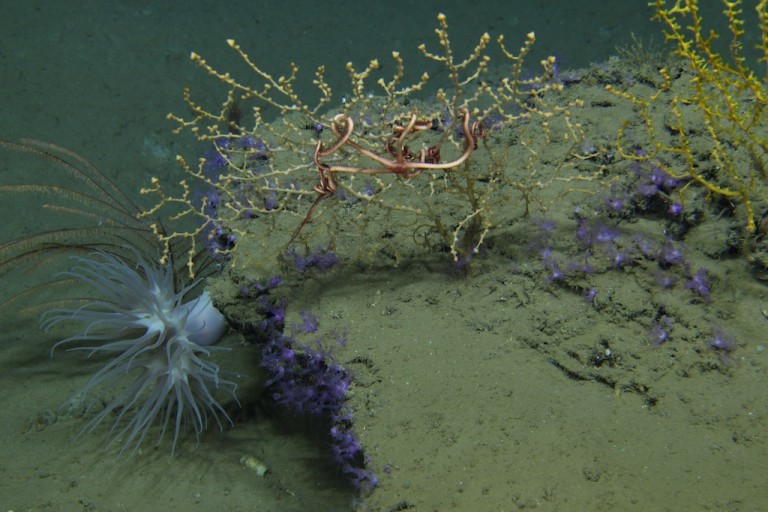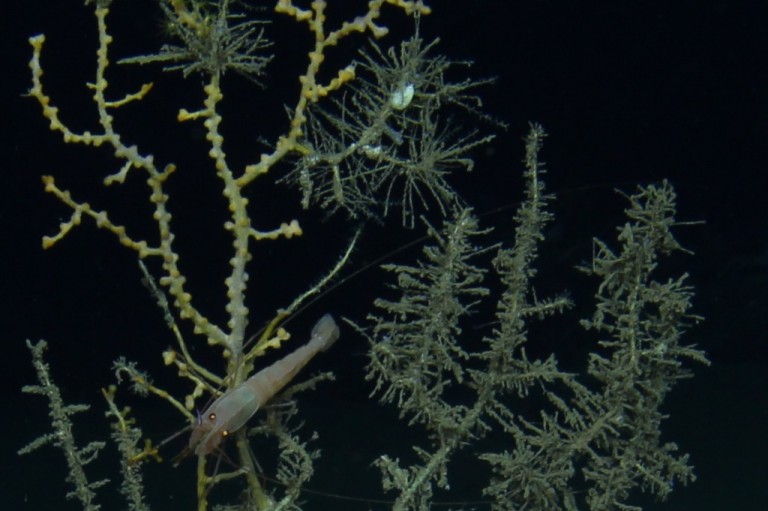Clusters of feathery hydroids cling to many of the coral colonies that Dr. Chuck Fisher and his team have been studying during the latest scientific deployments of ROV Global Explorer MK3 from research vessel Falkor. Hydroids are signs of coral stress monitored by scientists. Hydroid-encrusted corals were found in the areas that were directly impacted by the Deepwater Horizon disaster.

Healthy coral colonies often have other organisms attached and intertwined among their branches. Corals function like trees in the deep ocean, providing other animals with habitat they can climb to position themselves within currents that carry food. Ophiuroid brittlestars are one such colorful inhabitant. Large aggregations of hydroids are generally absent on healthy coral colonies. Instead, hydroids encrust damaged branches and can indicate the overall health of the coral.
Dr. Fisher’s team is documenting changes in hydroid coverage on distinct coral colonies in the target study areas. Dr. Fisher can often identify a particular colony by sight, recalling what has changed since it was last imaged during its previous ROV or submersible survey. His team uses image analysis tools to record and quantify these changes to better understand the progression of impacts from the Deepwater Horizon oil spill. On this cruise alone, the team has recorded more than 4,000 images that will be added to the image database and analyzed back in the lab at Penn State.

Diving ROV Global Explorer MK3 to record photos and videos of corals at the target sites remains today’s primary scientific objective onboard R/V Falkor. Fisher’s students Samantha Berlet and Richard Dannenberg continued to work closely with the pilots in the ROV control room throughout the dive. Samantha keeps track of the dive course and targets while referring to a thick three-ring binder filled with “mug shots” of each observed coral colony. Richard operates the ROV still camera in coordination with the pilots. Changes in the ocean current conditions challenge ROV pilots each day by making it difficult to match previous coral imaging angles. The ultrafine seafloor sediment is easily disturbed and forms murky clouds. This, in turn, forces the pilots to wait before the photos of corals can be taken.
A daily pattern of operations has established itself with research activities taking place throughout the day and night. Typically, the ROV dive occurs during the daylight hours and then is followed by a deployment of the multicore around dinnertime for sediment samples. Processing of mud and water samples follows long past midnight in the labs and cold van while mapping runs until dawn in the science control room. The coral experiments have been running around the clock as well. To keep all the activities coordinated and to make sure everyone is getting the samples and support they need, Chuck has the science team meet twice a day to keep operations on track. Now that the cruise is nearing the end, the discussions include plans for packing up the samples and gear. The final three days of ROV dives are being planned.
